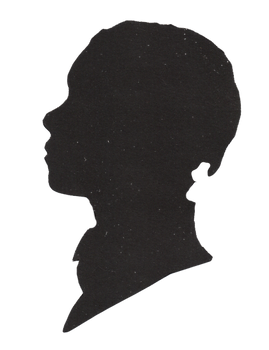Marlpit Hall, painted by Henry Gulick in 1952
Welcome to Colonial Monmouth!
Middletown's Marlpit Hall stands today as a window into the 18th century. This c. 1762 home and its residents witnessed many of the most exciting, inspirational, and painful chapters in our history, from the fight for independence to the heartbreak of slavery.
This resource will give students insight into the history of slavery in New Jersey using many of the primary sources used to build the award-winning exhibit, Beneath the Floorboards: Whispers of the Enslaved at Marlpit Hall.
This page can only be viewed on a laptop or desktop. It is not enabled for mobile phones. Sorry for the inconvenience!
Approaching Marlpit Hall in the 18th Century
Let's take a little trip, during which we will be invisible. It is 1778, and you are traveling to Marlpit Hall, the farmhouse owned by the Taylors of Middletown. This means you are either in a wagon or on a horse right now, so be careful and hold tight! There are very few houses in the area at this time, with great distances between them. The dirt road that is Kings Highway can be bumpy and treacherous! If your wagon wheel pops off or you fall from your horse, help is not around the corner!

Life Before Enslavement
By the mid-1700s, nearly all enslaved people in America were directly from West Africa or the descendants of enslaved Africans. They were removed from a homeland that was rich in culture and magnificent civilizations, such as the Mali empire, dating back thousands of years. West Africans had built a trade empire, and were quite skilled in the areas of art, medicine, and other sciences such as astronomy and mathematics. Europeans began taking Africans against their will for their talents and their labor. The transatlantic slave trade was soon born.

Detail of the Catalan Atlas, 1375
They Were There...
Scroll over the image to learn about the individual









Daily Life
The enslaved were deprived of freedom, but found ways to make their lives as meaningful as possible. Aside from daily work, they took comfort in their families and friends. They practiced religion, dreamed, danced, made music, laughed, loved, and formed bonds among themselves and the local community of free blacks and abolitionist whites. Read on to learn about the day-to-day activities and interactions of Monmouth's enslaved.

Deep Down in My Heart...
The Influence of African Music Then and Now
African rhythms came overseas with the first slave ship, and were passed down through generations of enslaved persons. Music was used for communication, celebration, in rituals and expressions of self. The most common type of African song was known as call and response. A singer would call out a line and a response was called back. This style can be heard in the music of today. Listen to the following audio clip to hear an authentic African call and response example, and then listen to the modern examples the follow. Can you think of any other examples of call and response songs today?


RESISTANCE!
The enslaved protested their condition in different ways. Rather than leaving their African heritage behind, they celebrated it through religion, food, and music. Some pretended to be sick or did a poor job of their tasks, such as burning meals or breaking tools. Some fought back when they could. Escaping was also a brave act of resistance. This was a very difficult decision to make; if the runaway was caught, they could be beaten, sold, or thrown in jail. Sometimes the penalty was death, to discourage other slaves from thinking of escaping.
SO HOW DO WE KNOW THAT??
Learning with Primary Sources
Primary sources are original items created during the time you are studying that help to tell you about that time period. Examples of primary sources are diaries, newspapers, account books, maps, photographs, letters, and artifacts like tools or clothing. They are now voices from the past from someone who lived then, so it makes them an excellent source of information. If you wrote a letter to a friend about what your school experience was like today, that would be a great primary source!

- Key Term Card Deck -
SLAVERY
RESISTANCE
TRAVEL PASS
ABOLITIONIST
MANUMISSION PAPER
INDENTURED SERVANT
PRIMARY SOURCE
INVENTORY
SPIRITUALS
HOODOO

Many grateful thanks for the advisory contributions of:
Bernadette Rogoff, MCHA Director of Collections
Joe Zemla, MCHA Associate Curator
Hank Bitten, Executive Director of the New Jersey Council for the Social Studies
Dr. Wendy Morales, Assistant Superintendent of the Monmouth and Ocean Educational Commission
For class trips or professional development training, please contact Dana at dhowell@monmouthhistory.org





